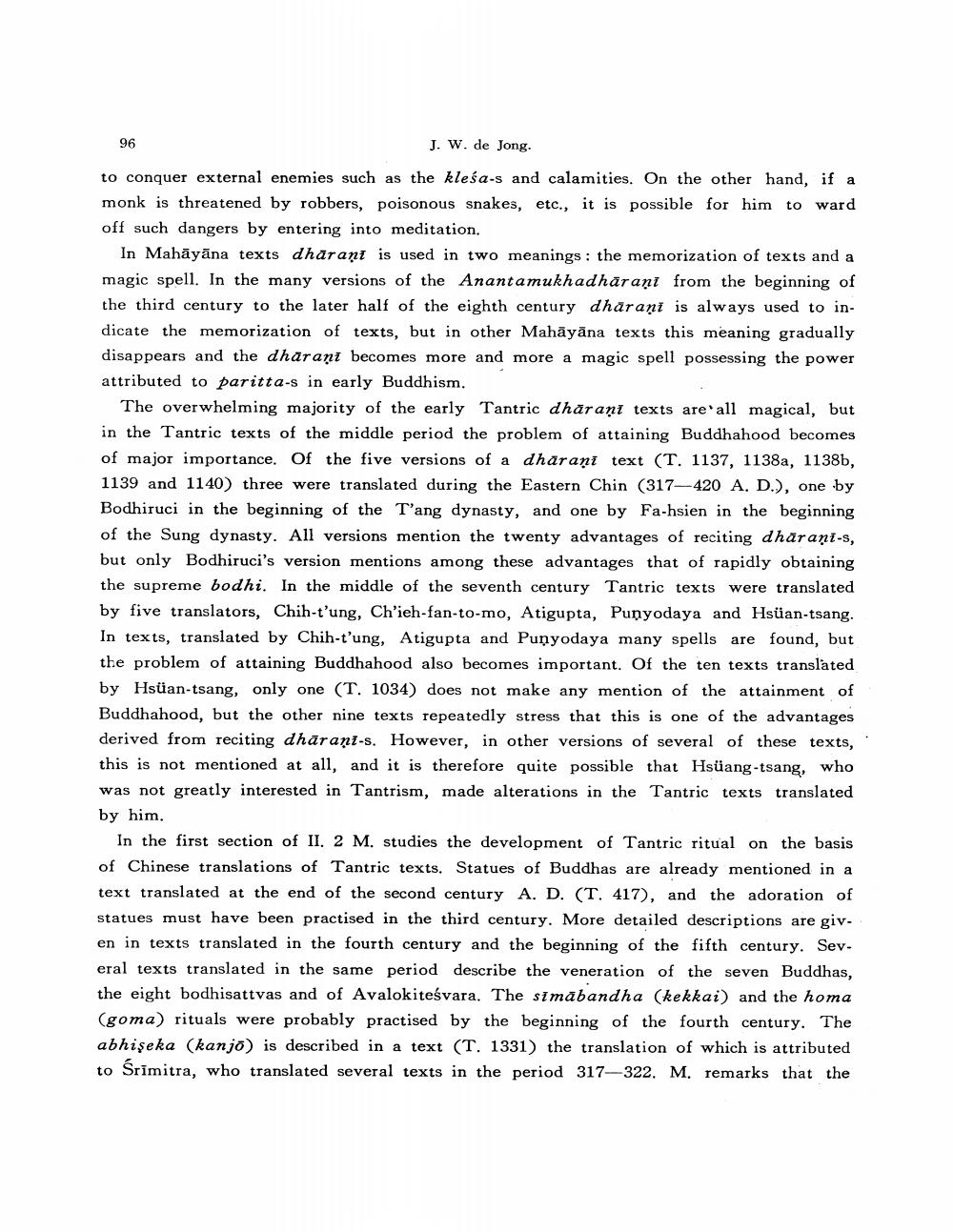Book Title: New History Of Tantric Lieterature In India Author(s): J W De Jong Publisher: J W De Jong View full book textPage 6
________________ J. W. de Jong. to conquer external enemies such as the kleśa-s and calamities. On the other hand, if a monk is threatened by robbers, poisonous snakes, etc., it is possible for him to ward off such dangers by entering into meditation. In Mahāyāna texts dharani is used in two meanings: the memorization of texts and a magic spell. In the many versions of the Anantamukhadhāraṇī from the beginning of the third century to the later half of the eighth century dharant is always used to indicate the memorization of texts, but in other Mahāyāna texts this meaning gradually disappears and the dharani becomes more and more a magic spell possessing the power attributed to paritta-s in early Buddhism. The overwhelming majority of the early Tantric dharant texts are all magical, but in the Tantric texts of the middle period the problem of attaining Buddhahood becomes of major importance. Of the five versions of a dharani text (T. 1137, 1138a, 1138b, 1139 and 1140) three were translated during the Eastern Chin (317-420 A. D.), one by Bodhiruci in the beginning of the T'ang dynasty, and one by Fa-hsien in the beginning of the Sung dynasty. All versions mention the twenty advantages of reciting dharani-s, but only Bodhiruci's version mentions among these advantages that of rapidly obtaining the supreme bodhi. In the middle of the seventh century Tantric texts were translated by five translators, Chih-t'ung, Ch'ieh-fan-to-mo, Atigupta, Punyodaya and Hsuan-tsang. In texts, translated by Chih-t'ung, Atigupta and Punyodaya many spells are found, but the problem of attaining Buddhahood also becomes important. Of the ten texts translated by Hsüan-tsang, only one (T. 1034) does not make any mention of the attainment of Buddhahood, but the other nine texts repeatedly stress that this is one of the advantages derived from reciting dharant-s. However, in other versions of several of these texts, this is not mentioned at all, and it is therefore quite possible that Hsüang-tsang, who was not greatly interested in Tantrism, made alterations in the Tantric texts translated by him. 96 In the first section of II. 2 M. studies the development of Tantric ritual on the basis of Chinese translations of Tantric texts. Statues of Buddhas are already mentioned in a text translated at the end of the second century A. D. (T. 417), and the adoration of statues must have been practised in the third century. More detailed descriptions are given in texts translated in the fourth century and the beginning of the fifth century. Several texts translated in the same period describe the veneration of the seven Buddhas, the eight bodhisattvas and of Avalokitesvara. The simabandha (kekkai) and the homa (goma) rituals were probably practised by the beginning of the fourth century. The abhişeka (kanjo) is described in a text (T. 1331) the translation of which is attributed to Śrīmitra, who translated several texts in the period 317-322. M. remarks that thePage Navigation
1 ... 4 5 6 7 8 9 10 11 12 13 14 15 16 17 18 19 20 21 22 23
